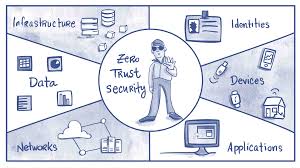Introduction: The Growing Threat of Ransomware
As we progress through 2024, ransomware attacks continue to pose a significant threat to organizations across various sectors. These malicious cyber incidents not only disrupt operations but also jeopardize sensitive data and financial stability. With attackers employing increasingly sophisticated methods, understanding current trends and implementing effective prevention strategies is crucial for businesses to safeguard their assets.
1. Trends in Ransomware Attacks
In 2024, several notable trends have emerged in the landscape of ransomware attacks.
a. Targeting Critical Infrastructure
One alarming trend is the increasing targeting of critical infrastructure sectors, such as healthcare, energy, and transportation. Cybercriminals recognize the potential for high payouts in these sectors, as the disruption of services can lead to severe consequences and immediate pressure to pay ransoms. For instance, attacks on hospitals can endanger patient care, prompting swift responses from organizations to restore services.
b. Double and Triple Extortion Tactics
Attackers are also adopting double and triple extortion tactics. In double extortion, hackers encrypt files and threaten to publish sensitive data if the ransom isn’t paid. Triple extortion takes this a step further by targeting third parties, such as clients or partners, to apply additional pressure on the victim to comply. This trend highlights the importance of not only protecting data but also understanding the interconnected nature of modern business relationships.
c. Increased Use of Ransomware-as-a-Service (RaaS)
The proliferation of Ransomware-as-a-Service (RaaS) platforms has made it easier for even less technically skilled criminals to launch attacks. These platforms provide ready-made tools for launching ransomware attacks, creating a marketplace where affiliates can pay for and use the infrastructure to carry out their schemes. This trend has led to a surge in attacks, as the barriers to entry for cybercriminals are significantly lowered.
2. Effective Prevention Strategies
To combat the growing threat of ransomware, organizations must adopt comprehensive prevention strategies.
a. Regular Backups and Data Encryption
One of the most effective defenses against ransomware is regular data backups. Organizations should maintain up-to-date backups of critical data and store them offline or in a secure cloud environment. This ensures that, in the event of an attack, businesses can restore their data without succumbing to ransom demands. Additionally, data encryption can protect sensitive information, making it less accessible to attackers even if they gain access to a network.
b. Employee Training and Awareness
Human error remains a significant factor in ransomware infections. Therefore, training employees on cybersecurity best practices is essential. Organizations should conduct regular training sessions to educate staff about recognizing phishing attempts, suspicious emails, and other common tactics used by cybercriminals. Building a culture of cybersecurity awareness can significantly reduce the likelihood of successful attacks.
c. Implementing Advanced Security Solutions
Investing in advanced security solutions, such as endpoint detection and response (EDR) and network monitoring tools, can help organizations detect and respond to ransomware threats swiftly. These solutions use machine learning and behavioral analysis to identify anomalies and potential attacks in real time. Additionally, maintaining updated antivirus and anti-malware software is crucial for defending against known threats.
Conclusion: Staying Ahead of the Threat
As ransomware attacks evolve in 2024, organizations must remain vigilant and proactive in their cybersecurity strategies. By understanding the current trends and implementing effective prevention measures, businesses can better protect themselves against the devastating impacts of ransomware. Continuous investment in cybersecurity education, technology, and practices will be key to safeguarding sensitive data and maintaining operational resilience in an increasingly hostile digital landscape.

